Showing 171–180 of 1178 results
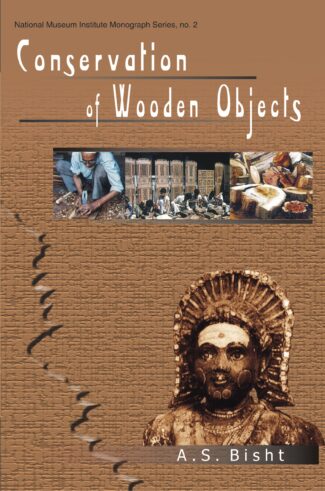
The book deals with all aspects of conservation of wooden artefacts and gives detailed information on types and location of wooden artefacts in India, the various agencies of degradation, and the technology to be adopted to re-construct and conserve these precious evidences of Indian heritage.
The book deals exhaustively with conservation of our ancient heritage existent in the form of wooden artefacts. This volume contains four chapters. The first chapter deals with the history of use of wood, location of wooden artefacts and the need to review our policy of acquisition of artefacts. The second highlights the information on the source of wood, identification, properties of wood, and techniques of making wooden objects. The third one explains the deterioration mechanism of wood substance and other constituents by various agencies of degradation, inherent structural defects and need for proper examination and documentation to decide on the treatment required. The final chapter details the conservation technology for wooden objects explaining the steps in eradication of biodeterioration, cleaning, physical repairs, restoration/retouching and preventive measures. No doubt this book should serve as a valuable guide to archaeologists, conservators, and students of museology.
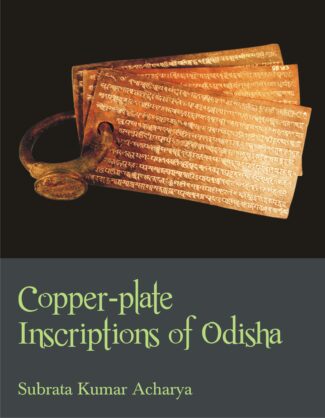
This catalogue of more than 400 copper-plate inscriptions of Odisha from the fourth to the sixteenth century ce furnishes the detailed information about the rulers and the beneficiaries, religious persuasion of the kings, occasion and purpose of the land grants, eras and other astronomical details, numerical systems, development of language and script, administrative and revenue terms, etc.
Odisha is well known for its epigraphical wealth. More than 400 copper-plate grants and 1,000 stone inscriptions ranging from the fourth to the sixteenth century ce have been discovered so far. In this volume, the author has taken extreme care in documenting all the published and unpublished copper-plate grants including the stray plates, spurious charters and the palimpsests.
These epigraphs are grouped under different dynasties and the relevant data in each copper-plate inscription have been systematically classified making the volume a descriptive catalogue of the copper-plate inscriptions of Odisha. It, thus, painstakingly furnishes detailed information about the rulers and the beneficiaries, religious persuasion of kings, occasion and purpose of the grants, eras and other astronomical details, officers and persons present at the time of the grants, rights and privileges transferred to the donees, land measures, prevailing currency system of the period, administrative and revenue terms, topographical details, development of language and scripts, and so on. These inscriptions, mostly in Sanskrit, also delineate the system of numeration while specifying the era or days of a month, amount of tax to be paid, land measures, etc.
While adopting a comprehensive approach in treating the subject, the book deals with the technique of preparing copper plates for writing the royal deeds; flattening of the metal sheets into rectangular plates, their sizes, positing of the seals, the symbols and legends on the seals, amidst many more pieces of information.
This innovative and scholarly work should entice the spirit of students, historians and researchers, especially those who are interested in the history and culture of Odisha. The bibliographical details furnished in the volume will prove to be of immense help to serious scholars working in the field.
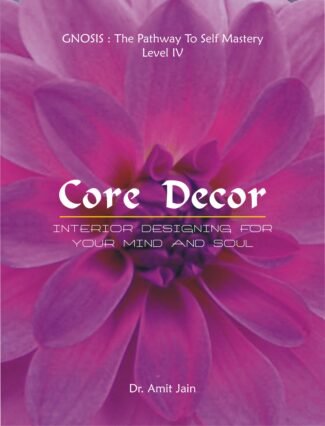
The book is a call for developing values of the soul rather than the moral values one has grown with. It provides a deeper understanding of the psychology of human behaviour and talks about three kinds of love sexual, emotional and conscious. It also reveals the esoteric exercises of Runes to awaken our consciousness.
Overall the book calls the reader to develop the values of the soul which are much more important than the moral values we have grown with. Also get a deeper psychological understanding on why some people annoy us so much and why we find some people very irritating and how we unconsciously project our own defects on others. Liberating and insightful, it talks about the three kinds of love Þ sexual, emotional and conscious. Dr Jain also reveals the esoteric exercises of Runes that awaken the consciousness.
For those striving to grow spiritually it explains in detail the Eightfold Path that is the most important teaching of Lord Buddha. Included here is wisdom for young on how to choose a vocation that each human being is here for a purpose. A must read for anyone on the path of spiritual awakening.

It examines the beliefs of ethnic groups together with archaeological data to study the traditional cosmic world-view of Indian, Rome, Columbia and Meso-America, presenting a comparative evaluation of these cosmologies.
Ancient cultures everywhere sought (among other philosophical speculations), to unravel the mystery of the Universe: its origin, its ultimate root, and what sustains and energizes it. As such, they not only tried to conceive the Universe according to their own vision, but also used varied metaphors/images to communicate the grand cosmic mystery that transcends the constraints of space and time, of logic and casuality. Exploring beyond the New-Age trend, this volume offers some of the insightful studies of ancient cosmology and the unique human experience producing its diversified expressions across the continents. Going into the beliefs of different ethnic groups, together with the data from different archaeological horizons, the book brings out the traditional cosmic world-view of Rome, India, Colombia and, more specially, of Meso-America a cultural area which, till the Spanish invasion in the sixteenth century, included most of the present Republic of Mexico, Guatemala, El Salvador, and parts of Honduras, Nicaragua and Costa Rica. Also included here is a comparative picture of the cosmologies of India, China and Meso-America. Essentially an assemblage of erudite presentations of a symposium held during the XVII International Congress of Anthropological and Ethnological Sciences: 1995, Mexico City, the book captures a cross-section of the ongoing worldwide researches on cosmology. Which are bound to interest the scholars of anthropology, social anthropology, ethnology, religion and traditional cultures.

This volume deals with different issues related to religious practices and institutions in South Asia. It further seeks to substantiate the well-known opposition between the so-called orthodox sovereignty and the heterodox one, of which the so-called vratya-power seems to be a prime example.
This volume, Cross-cutting South Asian Studies: An Interdisciplinary Approach focuses on two themes that are central to Indological studies: religious practices and heterodox sovereignty.
The first part of this volume The Indian Ocean of Religious Practices: Past and Present deals with different issues related to religious practices and institutions in South Asia. These contributions share a similar theoretical perspective on religion: they all highlight, in various ways and through different disciplinary approaches, how, in order to fully understand religious practices and their inherent dynamics, it is essential to consider the power relations that continually imbue and shape them.
The second part Kings, Priests and Prominent Roles Interpreted through the Visual, Literary, Speculative, and Technical Indian Arts seeks to substantiate the well-known opposition between the so-called orthodox sovereignty and the heterodox one, of which the so-called vratya-power seems to be a prime example. Therefore, the target of the relevant contributions consists in focusing on different contexts where the king or chieftain, or merely the patron of the sacrifice, gains his temporary pre-eminence in an agonistic way which includes an important non-permanent ascetic dimension.
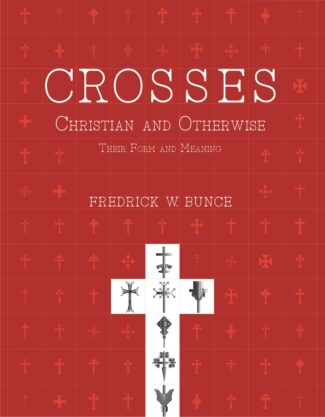
The book discusses the pre-Christian iconographic cruciform Hindu and Buddhist temple structures and in detail the Christian cross iconography and the varied types of crosses. It presents numerous forms of Latin and Greek crosses, mainly from the ecclesiastical and heraldic viewpoint, along with a few other cross forms.
In top-of-the-mind reading, crosses are the iconographic representation of Christianity, though cross became an embodiment of Christian iconography only after the fifth century ce. In this volume, the author unveils the existence of 500 plus crosses, of which around 300 are of ecclesiastical, heraldic or mundane crosses. Most of these cruciforms were introduced before the twentieth century.
Cruciform was antecedent of Christianity. There were numerous cruciform Hindu and Buddhist temples, even before the advent of Christianity and thus these hold no Christian ecclesiastical relevance. Of late many churches, cathedrals and basilicas applied cruciform to their structure and look in conformity with the Christian iconography. This enunciates the endless design possibilities of cruciform. The book discusses the pre-Christian iconographic cruciform Hindu and Buddhist temple structures and in detail the Christian cross iconography and the varied types of crosses. It delves deep into the numerous forms of Latin and Greek crosses, mainly from the ecclesiastical and heraldic viewpoint. Crosses adorned ecclesiastical, military, professional and trade implications, and were carved on shields and coats of arms.
This volume also addresses other categories of crosses such as solar crosses, saltire crosses and miscellaneous crosses though they too have occasional ecclesiastical and heraldic implications. The book thus gives a fair account of the emergence, use and application of cruciforms until the twentieth century.
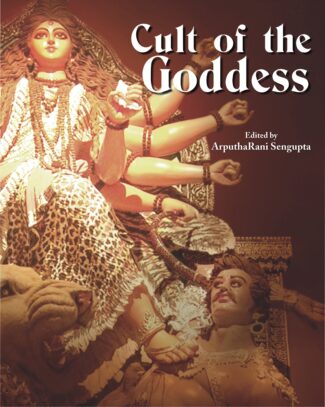
This book provides an unparalleled insight in exploring the Great Goddess as she lived and still lives in the psyche of India and in the Greater India, over a period of five millennia. It traces the origin and trajectory of the evolution of the divine feminine force in the visual discourse. This multilayered goddess cult finds its expression in great achievements in art and culture in manifold forms and roles.
This volume is comprised of forty-one well researched and illustrated papers on Cult of the Goddess. It tries to trace the origin and trajectory of the divine feminine force in art and culture for over a period of five millennia, which is a great achievement in itself. While exploring the living tradition of the Great Goddess, the book offers unique insight to the psyche of India and the Greater India.
In the multifaceted goddess cult, the goddess takes diverse forms in her role as a destroyer of demonic forces and a donor of boons to her devotees. The goddess is also the divine consort, creator of the universe, source of progeny, prosperity and immortality. In her numerous roles the goddess maintains the equilibrium and sanctity of the universe. In mythology, the Mother Goddess is worshipped as the earth, fish, snake, tree or the forest.
The book delves deep into the imagination and religious lives of the people to understand the meaning of rituals, philosophy and metaphysics. The enduring appeal of the goddess in folk traditions and in classic literary sources is discussed from various points of view. The span and the depth of research encompassing the goddess include the shifting changes in the present era and finds her manifestations in Bonabibi, Kadamkottu Makkam and Manushi Swaccha Narayani, in addition to the well-known concept of Parashakti, Lakshmi, Sarasvati, Durga, Mahishasuramardini, Prajnaparamita, Hathor, Isis and Mother Mary.
This richly illustrated volume on Cult of the Goddess is a rare and priceless collection for art historians, researchers, students, and others interested in art, culture and religion.
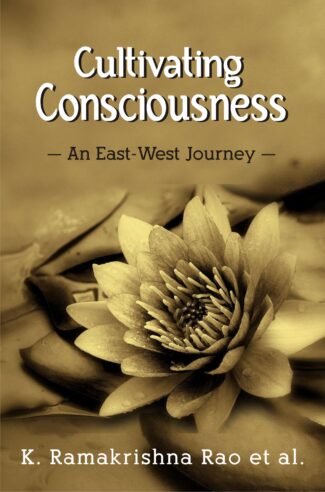
This book contains transdisciplinary discussions on the nature of consciousness, the methods of studying it, the relevance of consciousness to our values and its role in enhancing human potentials and wellness. Chapters of Ramakrishna Rao, devoted to Yoga, Advaita and Buddhism and contrasts the Indian views with those in the West, make the book a unique collection
Consciousness is the distinctive and defining future of human condition. Its study is at once fascinating and frustrating, because consciousness is too familiar to ignore and too complex and elusive to understand and explain. Many consider understanding consciousness the greatest challenge facing twenty-first-century science.
Cultivating Consciousness is an absorbing East West dialogue on the conceptual, methodical and theoretical issues. In this unique collection of scholarly articles by eminent researchers in and exponents of consciousness studies we find transdisciplinary discussions on the nature of consciousness, the methods of studying it, the relevance of consciousness to our values and its role in enhancing human potentials and wellness. Ramakrishna Rao discusses consciousness from the perspective of classical Indian thought in separate chapters devoted to Yoga, Advaita and Buddhism, and contrasts the Indian views with those in the West.
Over all, the book gives the nature of things to come, the controversies and complexities involved and the imminent clash of paradigms. This volume is more than a study in contrast; it is an intellectual bridge that facilitates the travel and exchange between the spiritual and scientific traditions of East and West and between first-person and third-person perspectives.

Focussing on the ecological systems in the mountains, forests and islands vis-a-vis the hitherto-adopted modes of aggressive development, these articles underscore the urgency of changing the modern lifestyles, befriending Nature and returning to wisdom tradition.
Urbanization. Industrialization. Market Economy. Technocentric Lifestyles. Degenerated Consumerism. Air, Water and Land Pollutions. These are some of the tell-tale expressions, recurringly surfacing in the concerns about ecological disturbances across the continents. Today, however, as we are headed for an ecological disaster, there is not only a growing awareness against the cornucopian technocentrism, but also a far-stretched disillusionment with the one-way exploitative, economic development. And even the national planners are being questioned: Can the law of a nation supersede the Law of Nature? Should the rights of the people be allowed to be destructively manipulated by the rules of power? Must the wisdom-tradition of our ancestors be shelved to accomodate the flagrant hypocrisies of the Planning tradition? As a part of the Unesco Chair activities at the Indira Gandhi National Centre for the Arts, a Conference: 13-16 October 1995, New Delhi, involved some of the highly reputed scholars in a stimulating dialogue on the Cultural Dimension of Education and Ecology. Its presentations are now offered in two volumes: setting out independently the Cultural Dimension of (1) Education, and (2) Ecology. Focussing on the ecological systems in the mountains, forests and islands vis-a-vis the hitherto-adopted modes of aggressive development, the 15 articles here underscore the urgency of changing the modern lifestyles, of befriending Nature and, above all, of returning to wisdom-tradition. Also included here are case-studies highlighting the aspects of culture that are being lived in the day-to-day lives of people even today! This collection is invaluable to environmentalists, social activists, economic planners, policy-makers, and cultural scholars working for the revival of traditional wisdom.

Here are essays on education, its current status, trends and problems in Bangladesh, India, Indonesia and Thailand focus on art in the age of science, educations role in promoting peace and the Gandhian system of basic education.
Traditional education strives to expand the spheres of existence through social awareness (forming kinship with the entire world), cosmological awareness (expansion of the being by self-transformation), and technological awareness (relating creativity to the ritual enforcement of life). In contrast, modern education teaches a way of life, which is limited by self-centred consumerism, which allows mans ego to establish itself as the conqueror of nature, which fragments people through competitive vocations and specialized technical professions. How do we resolve this deep dilemma between the traditional and modern systems of education? Or, alternatively, how can a sensibly worked-out system of education afford a symbiosis between modernity and wisdom-tradition? Addressing this vital question, the authors here look afresh at the relevance of art in the age of science/technocentrism, the role of education in promoting peace and concord, Gandhian system of basic education and, finally, how far Indias national concerns are reflected in its national policy on education. An assemblage of 16 education-related essays, this volume is essentially the outcome of a Conference on the Cultural Dimension of Education and Ecology, held in New Delhi on 13-16 October 1995 as a part of the Unesco Chair activities (in the field of cultural development) at the Indira Gandhi National Centre for the Arts. It presents insightful perspectives on primary education, focussing specially on its current status, trends and problems in Bangladesh, India, Indonesia and Thailand. The volume will interest all those involved with education: whether as scholars, professionals, planners, or as reformers.
| There are no products |